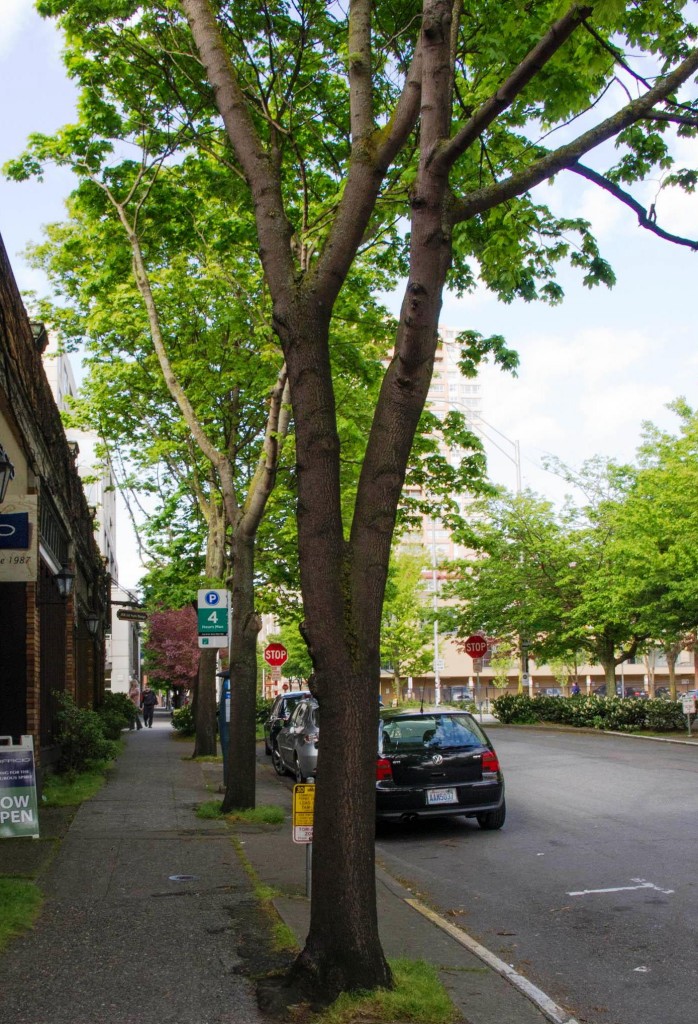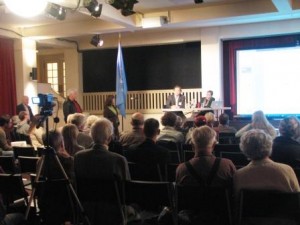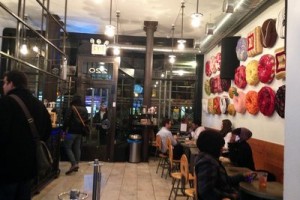Nature is the Original Hacker
Nature is the original hacker; she’s been at it for a long time, much longer than humans. Does nature ever get it wrong? The follow-up question is, wrong from whose perspective, a human perspective? Or, is it like Leonardo da Vinci said of art, “Art is never finished, only abandoned.” Perhaps when we think of nature being wrong, whatever we’re observing simply isn’t completed.
Generous Design by Nature
Nature is bountiful and sustainable; it’s also very generous. Trees, for example, are a generous gift from nature. Glorious natural trees are water absorbing, pollution filtering, soil protecting, oxygen giving, and shelter providing. Planting trees is good for the planet as trees absorb carbon dioxide, one of the gases that collect in the atmosphere, trap heat, and warm the planet. Trees are good for people too, with many positive psychological benefits. Being in the presence of swaying trees reduces anxiety, lowers blood pressure and connects us to the natural environment. The soothing rhythmic motion of trees or even grass is not unlike that of mothers who instinctively use gentle swaying motion to comfort their babies. Did you ever notice that you feel better around trees or in a rocking chair?
“The symbolism – and the substantive significance – of planting a tree has universal power in every culture and every society on Earth, and it is a way for individual men, women and children to participate in creating solutions for the environmental crisis.”
Albert Arnold “Al” Gore, Jr.
45th Vice President of the United States
Author, environmental activist,
2007 Nobel Peace Prize Winner
(born March 31, 1948)
Trees are a generous gift from nature. Humans can be generous designers as well.
Generous Design by Humans
As I describe in, The Experience Design Blueprint, generous design makes people smile. When an organization exceeds expectations without any pressure to do so, people often take notice. It might mean going beyond what is required by law or code, or even the norm set by competitors. Often the thoughtfulness goes unnoticed, but the design still serves to make things a little easier or a little better.
When you experience generous design firsthand you think to yourself, “Wow, somebody thought of that. How nice!” But, more importantly, you feel that somebody cared and as a result they touched your heart and your mind. Generous design goes beyond expectations, like a dual drinking station for humans and canines alike or a stair rail that extends a little more than required, so that it comfortably greets those about to meet the stairs. Unexpected trees alongside the built environment can be generous gifts that restore the human spirit, cause us to slow down, and even provide healing. We see and feel these in urban areas, parks, boulevards, universities, and even healthcare facilities.

Arbor Day
Arbor Day is the day dedicated annually to public tree-planting in the U.S., Australia, and other countries around the world. You needn’t be an arborist or a landscape designer to plant a tree. Even birds (or other animals) inadvertently plant trees as they eat fruit in one area and defecate in another. Animals do this without even thinking. But, you are human, perhaps even superhuman. You can be a thoughtful, generous designer and plant a tree, if not for yourself for those who will enjoy it 100 years from now.

Culture of Care
Though Arbor Day provides you an official day to be thoughtful and generous, you needn’t be gated by such holidays. Opportunities for generous design are all around us. The best thing is you don’t have to be a designer by title or role – a bird isn’t, after all. You can participate at any time, in planting a tree or other thoughtful acts that exceed expectations and turn lips upward. The Culture of Care is afoot. If you’ve already joined – thank you! If not, we hope you’ll join our movement.
about the author
Gregory Olson founded strategy and design firm Delightability, LLC. with the belief that if you delight customers then success will follow. He believes that we all have the potential to do better, as individuals, organizations, and entire nations.
 Gregory Olson’s latest book is L’ impossi preneurs: A Hopeful Journey Through Tomorrow, a light-hearted and deadly serious book about a brighter future where we live more meaningful lives, governments invest in people and sustainable progress, and technology serves humans.
Gregory Olson’s latest book is L’ impossi preneurs: A Hopeful Journey Through Tomorrow, a light-hearted and deadly serious book about a brighter future where we live more meaningful lives, governments invest in people and sustainable progress, and technology serves humans.
Greg also authored The Experience Design Blueprint, a book about designing better experiences and then making them come true.



 Gregory Olson founded strategy and design firm Delightability, LLC. with the belief that if you delight customers then success will follow. He believes that we all have the potential to do better, as individuals, organizations, and communities, but sometimes we need a little help. Gregory also serves as a volunteer board member for
Gregory Olson founded strategy and design firm Delightability, LLC. with the belief that if you delight customers then success will follow. He believes that we all have the potential to do better, as individuals, organizations, and communities, but sometimes we need a little help. Gregory also serves as a volunteer board member for 





 Freed from the shackles of inaction
Freed from the shackles of inaction But, even if they don’t, a culture of care can begin with each of us. At home, in school, in our communities, at work, even in the online community. So what about you? How will you create a culture of care, in your home, in your work, in your community? You’ll likely need a test to go with it. What will be your equivalent Reasonable Investor Test? We really can all do better as individuals, organizations, and the world community. I hope you’ll do your part. Onward.
But, even if they don’t, a culture of care can begin with each of us. At home, in school, in our communities, at work, even in the online community. So what about you? How will you create a culture of care, in your home, in your work, in your community? You’ll likely need a test to go with it. What will be your equivalent Reasonable Investor Test? We really can all do better as individuals, organizations, and the world community. I hope you’ll do your part. Onward.








 There is another audience that is underrepresented, and is often similarly ignored, taken for granted, and largely invisible to government, namely small business. You hear it often, that small business is the backbone of the economy. Small business creates more jobs more quickly while large organizations may continue to shed jobs, bolstering profits and earnings along the way to their short term utopia. Small business owners are usually so busy working that they too join the ranks of the invisible and marginalized. This is especially true of small businesses that have no storefront, operate virtually, often invisible to the public, and out of mind of city government.
There is another audience that is underrepresented, and is often similarly ignored, taken for granted, and largely invisible to government, namely small business. You hear it often, that small business is the backbone of the economy. Small business creates more jobs more quickly while large organizations may continue to shed jobs, bolstering profits and earnings along the way to their short term utopia. Small business owners are usually so busy working that they too join the ranks of the invisible and marginalized. This is especially true of small businesses that have no storefront, operate virtually, often invisible to the public, and out of mind of city government.